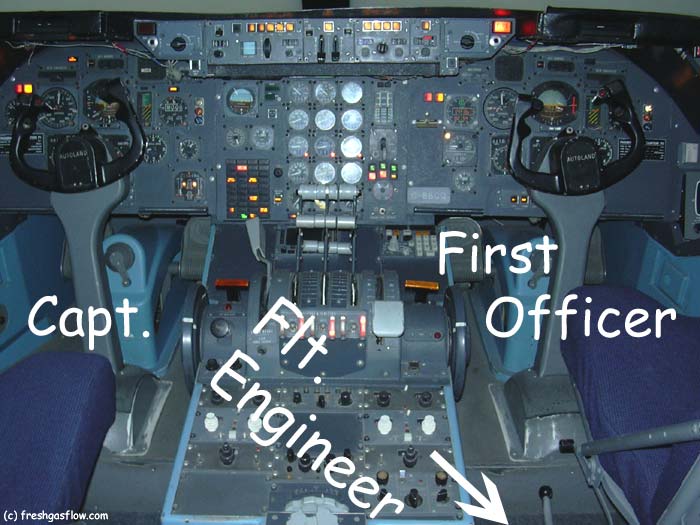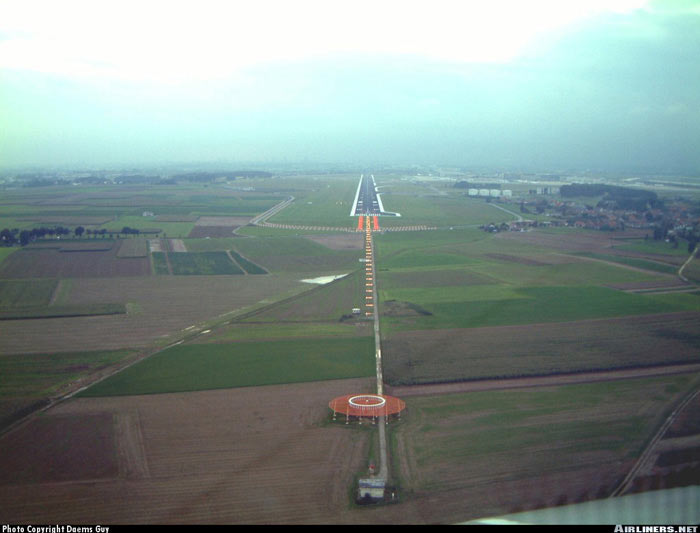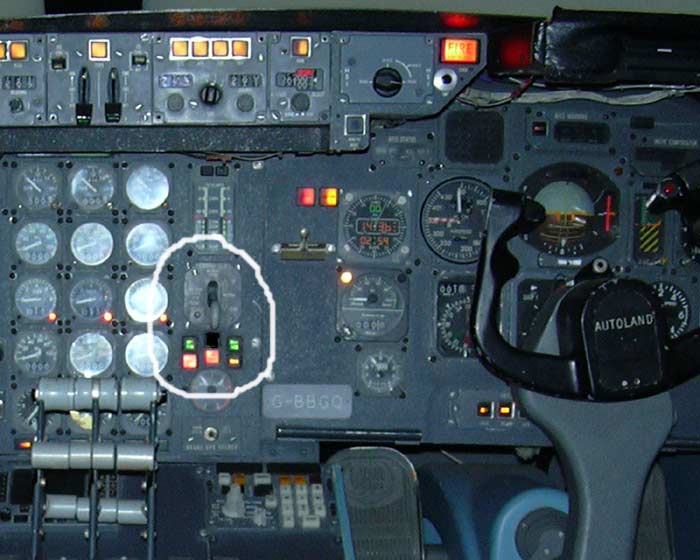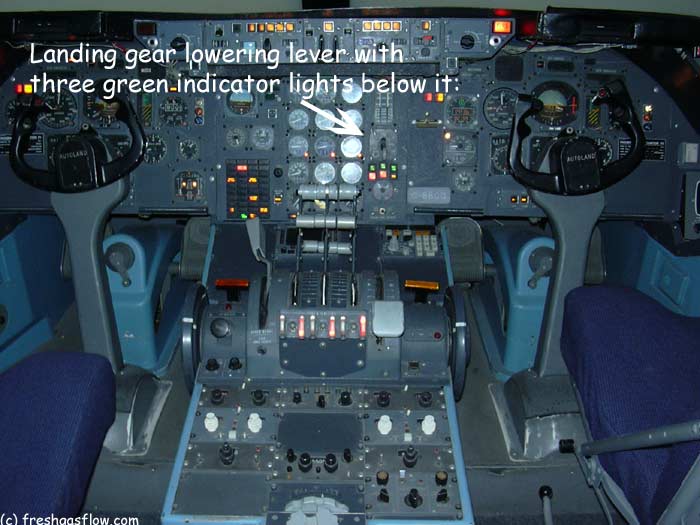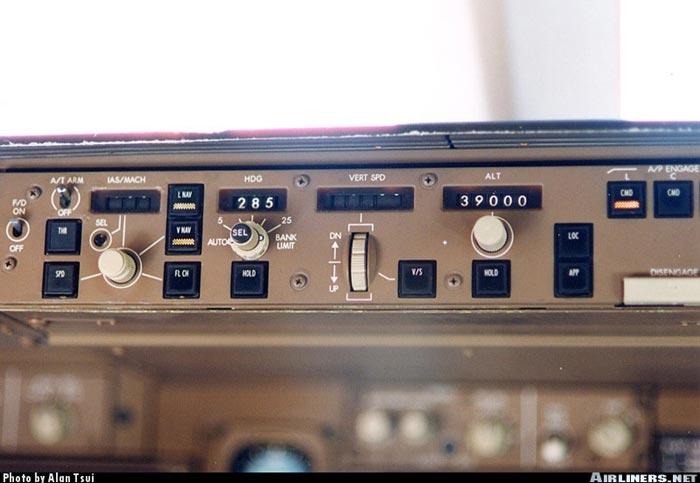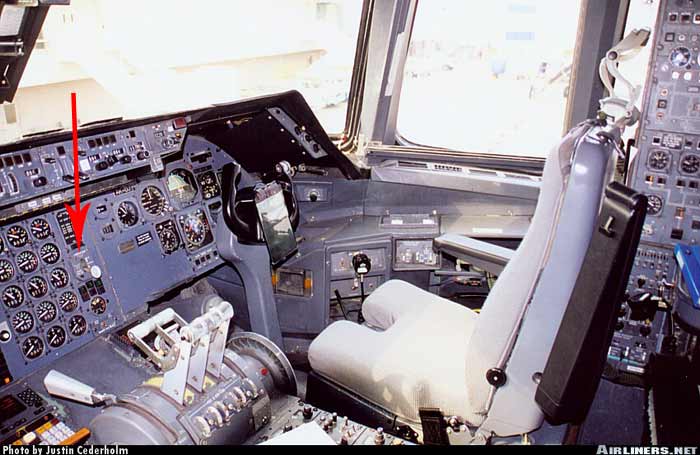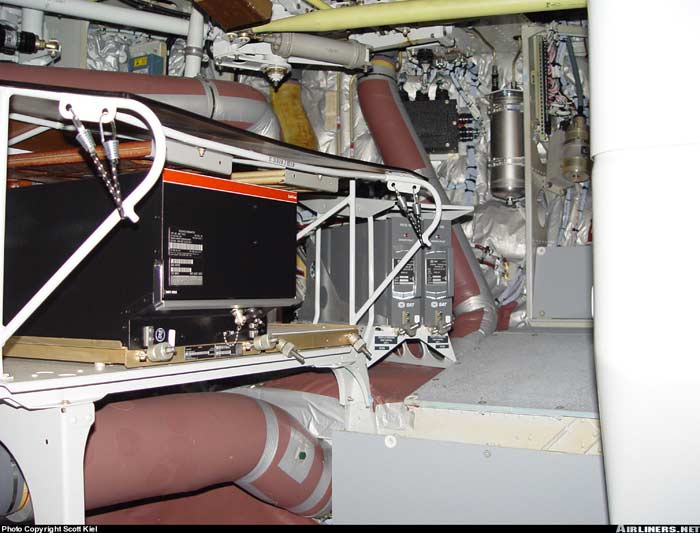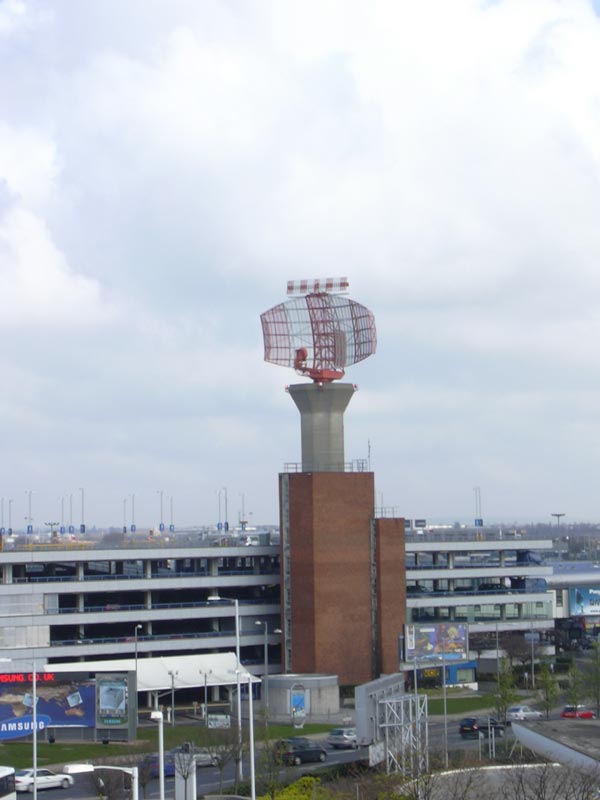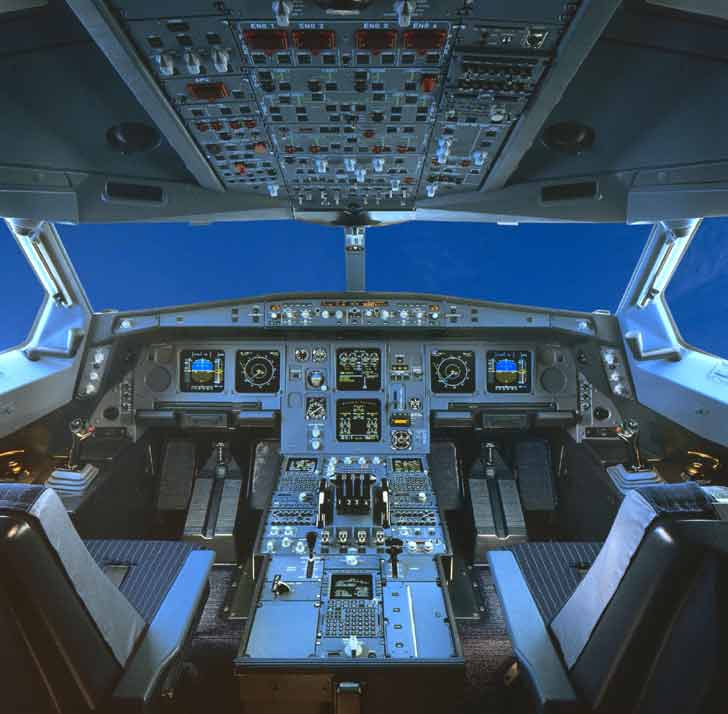
This is a story about how a burnt out light bulb led to a major aviation disaster. This story has relevance to those of us in anaesthesia.
On the night of December 29th, 1972, Eastern Airlines Flight 401 took off from New York and headed towards Miami, Florida. Less than three hours later the aircraft reached Florida. Unfortunately it did so as a scattered wreck over the marshes of Florida’s Everglades. One hundred and three lives were lost.
The pilots were highly experienced, yet their response to a faulty light bulb led to the crash of the giant aircraft . Poor utilisation / management of the resources available to the pilots were a significant contributory factor to the crash.
This website will take you through the flight made by Eastern Airlines Flight 401 using a transcript of the “black box” recording of pilot conversations minutes prior to the crash. The hope is that you will live through the drama and pick out the errors that led to a major disaster, and perhaps prevent similar errors occurring in your area of practice.
Though the crash of Flight 401 occurred over thirty years ago, it is still remembered as a classic case where appropriate resource management could have prevented disaster. There are important lessons from that crash that are very still relevant today in aviation (cockpit crew resource management) , medical practice ( specially anesthesia crisis resource management) and other fields.
The aircraft : Tristar L 1011
At 9:20 in the evening, Flight 401 took off from New York. The aircraft model was the Tristar L 1011. One could recognise it by its three engines; two under the wings and one at the tail.
Its length and breadth (wings) were about 50 meters. At take off it could weigh as much as around 200,000 kilograms.
At its time , the Tristar was a very advanced and comfortable aircraft. It had revolutionary flight control systems.
Quite uniquely it also had an “underground” kitchen that was connected to the cabin via elevators !
The Tristar that was used for Flight 401 was very new, being only about 4 months old. On that evening there were 160 passengers.
The photo below shows an Lockheed Tristar aircraft about to land. You can see the front wheels (which were very significant for Flight 401) and the two sets of rear wheels. You can also see two engines , one under each wing. The third engine is at the tail of the aircraft and is not very visible in this photograph. (Photo thanks to Mike Kay)
The Cockpit Crew
Flight 401 was now about two hours into its flight from New York to Miami. So far the flight was uneventful. Sitting in the cockpit were three crew members who flew the plane. There were two pilots who sat in the seats facing forwards and a Flight Engineer who sat behind them.
Captain: On the left hand seat, as was (and still is) tradition, sat the Captain. The Captain had final authority and responsibility of the aircraft. Flight 401 was flown that day by an highly experienced Captain who was aged 55 and had nearly thirty thousand hours of flying experience .
Co-pilot: Sitting in the right seat was the Co-pilot . He was 39 years old, had previously flown with the air force and had nearly six thousand hours of flying experience. Though the Captain has overall authority, the Co-pilot and Captain take turns to “fly” the aircraft while the other does supporting activities such as operating the radio. For Flight 401, the Co-pilot was the “flying” pilot and the Captain was the supporting pilot .
Flight Engineer: Sitting behind the pilots , facing the right wall , was a third crew member called the Flight Engineer (F/E). The F/E did not directly fly the aircraft. Instead , he looked after aircraft systems such as engines, hydraulics, electrical, and fuel. The F/E for the flight involved was 51 years old and had nearly sixteen thousand hours of flying experience. (Note: Modern aircraft do not have flight engineers. Computers have made their job redundant.)
Among the three of them, they had flown over fifty thousand hours. Yet with all that experience, the tragedy of FL 401 happened. Clearly , experience alone did not suffice.
Ground Engineer : Cockpits of aircraft have extra seats called “jump seats”. These are used , depending on airline policy , to ferry “off duty” staff members. On this fateful flight , a “ground engineer” was hitching a ride back home and was in the cockpit.
The public rarely see these “ground engineers”, but their skill is crucial for the safety of aviation. Behind the scenes these engineers on the ground maintain the extremely complicated aircraft. The ground engineer in the cockpit was previously in New York , investigating engine problems in one of the companies aircraft. He was returning home that day and occupied one of the jump seats in the cockpit. He survived the crash and thus was able to shed light on the events leading to the disaster.
The photo below shows a cockpit of similar aircraft. Captain sits in the left seat and the Co-pilot: (First Officer) sits in the right. The Flight Engineer sits behind the Co-pilot: , facing an instrument panel on the right wall (which you cannot see in this picture).
The Black Box
Soon after an air crash, investigators hunt for the “black boxes” as these may contain the answers to why the crash happened.
One of the black boxes is the “cockpit voice recorder”. There are several microphones in the cockpit that pick up conversations of the flight crew and other useful sounds such as alarms or sounds made when switches are moved. There may be up to four microphones in the plane’s cockpit. Signals from these are sent to the cockpit voice recorder. Older black boxes (such as those in Flight 401) used magnetic tape to store the last half an hour of voice prior to a crash. Newer designs use electronic memory boards which are much more reliable because they do not have moving parts and record about two hours of pre crash voice.
Aircraft have another type of black box called the flight data recorder (FDR) which records other information that may help solve air crash mysteries. There are a large number of sensors located all over the aircraft that record parameters such as altitude ,speed, engine performance ,hydraulic pressure, electrical systems, fuel , and many more. Modern boxes can record more than 700 parameters.
Black boxes are designed to survive the severe physical conditions that occur during a crash . They are located at the rear end of the aircraft as this is the area most likely to survive a crash (now you know where to sit !). The portion that contains information is well protected (e.g. aluminium and titanium ) and insulated (e.g. thick layer of silica) . The recording can survive an impact force equal to 3400 times its weight (3400 G’s) and can remain useable even if a 5000 pounds per square inch crushing force is applied. The data would remain intact even if you placed the boxes in a fire (temperature of 2,000 degrees Fahrenheit or 1,100 Celsius) for one hour. In addition , these boxes must be able to withstand submersion to cope with crashes that end underwater.
The boxes are designed to be found. Although they are called “black boxes,” aviation recorders are actually painted bright orange. This distinct colour helps investigators locate the black boxes following an accident. If the box gets submerged underwater (e.g. as in a sea crash) it automatically emits a locator signal once per second for 30 days.
After finding the black boxes, investigators take the recorders to a laboratory where they can unload data from the recorders and attempt to recreate the events of the accident. A team of experts is usually brought in to interpret the recordings stored on the cockpit voice recorder. This group typically includes representatives from the airline, airplane manufacturer, and Government air safety agencies. This group may also include a language specialist. This board attempts to interpret 30 minutes of words and sounds recorded by the cockpit voice recorder.
This website tells the story of Flight 401 via the transcript of the cockpit voice recorder recording.
The photo below shows a typical black box : Note how it is hardly black at all ! The silver cylindrical object at the front is a special underwater transmitter that helps locating a sunk black box. It is automatically activated on contact with water. (Photo copyright and thanks to Fred Wheeler and L-3 Communications Corp.)
Lining up to land
Flight 401 was nearing its destination. The pilots were making final adjustments to the aircraft to land at Miami International Airport.
It was late at night, a little after eleven thirty.
Below is an adaptation of the transcript of the Black Box which recorded the pilot conversations.
The transcript begins with the Captain asking the Co-pilot to move the lever that lowers the wheels for landing.
The Captain then contacted the air traffic controller to tell them that he was turning his aircraft to line up finally with the runway. He does this by radio.
The air traffic controller responded and asked FL 401 to continue to runway number 9. Runways are numbered according to the direction they point at. Runway 9 extends towards East , which is 90 degrees on the compass (90 is abbreviated to 9).
“Black Box Recording”
( explanations in brackets are mine)
Warning : I have removed some text in this transcript to make it clearer.
Captain: Go ahead and throw ’em out (telling co-pilot to lower the wheels)
Capt to air traffic controller: Miami Tower, do you read, Eastern 401? Just turned on final (telling the control tower that they are on the final path to land)
Air traffic controller: Eastern 401 Heavy, continue approach to 9 (Heavy = large aircraft) (continue approaching runway number 9)
Capt to air traffic controller: Continue approach, roger (acknowledgement of the instruction)
The photo below show a cockpit view of an aircraft on final approach to an airport in Belgium. You can see the runway in the distance. The red circle at the bottom end of the picture is a special radio antenna used for navigation. Notice how there are lights extending beyond the runway into the field around. This is to help pilots have better visual cues. Also note that , unlike this picture, Flight 401 was flying at night. (Photo copyright with Daems Guy)
Checklist
Airline pilots use checklists very frequently. There are checklists for various phases of a flight.
Before landing , the crew of Flight 401 did a check list. It involved interaction between the crew members. Part of the checklist concerned the lowering of the wheels. The wheels in aircraft are called “landing gear” or “gear” ( They don’t mean the same as gears in a car!).
Flight Engineer: Continuous ignition. No smoke ( they are doing their landing check list )
Captain: Coming on Flight Engineer: Brake system
Captain: Okay Flight Engineer: Radar Captain: Up, OFF
Flight Engineer: Hydraulic panels checked (the hydraulic systems are functioning okay)
Co-pilot: Thirty-five, thirty three
Flight Engineer: Engine cross bleeds are open
Someone: Gear down (landing wheels down)
Photo of Flight Engineers instrument panel: The Flight Engineer sat behind the Co-pilot and faced an instrument panel on the right wall , similar to this one. Notice how many of the dials were replicated as the aircraft had multiple systems for safety. For an example, the Tristar aircraft had four hydraulic systems for safety.
Modern aircraft do not have flight engineers; their job been largely replaced by computers. (photo courtesy Ben Wang)
Doubts about the front wheel
An aircraft’s shape is extremely smooth to offer minimum resistance to airflow. To help maintain this smooth shape , as soon as an aircraft is safely off the ground , the wheels are taken in and hidden inside. At the time of landing the wheels are needed again. Doors on the under surface would open and the wheels are lowered.
A common arrangement of wheels ( called “gear” in aviation talk) in aircraft like the one involved in Flight 401 is to have two on either side at the back and one at front (nose wheel) (i.e. like a tricycle).
When the crew of Flight 401 put the lever down that lowers the wheels , three green lights should have lit up in the cockpit to indicate that all three wheels were indeed down and locked in that position. Unfortunately , the light for the nose wheel did not light up. The procedure was repeated , but the light remained unlit.
The photo below shows the switch that lowers the landing wheels. The switch that lowers the aircraft’s wheels has a little “wheel” attached to it to remind pilots of its function. Successful lowering of the three wheels is indicated by the three green lights near the lever.The switch in this picture is in the “DOWN” position. Normally, three green lights below the switch would light up to indicate that the three wheels of the aircraft are reliably down. Unfortunately , in Flight 401 ( as this photo simulates) the middle light did not light up. The front wheel may be stuck and not going down, or perhaps the indicating system was faulty.
There were two possibilities. Perhaps the front wheel was stuck and was not lowering properly. The other possibility was that the front wheel was indeed safely down , but the indicator system was faulty.
They decided to abandon the landing till they sorted out the problem. The control tower was informed. The tower instructed the landing aircraft to abandon the landing and to climb to two thousand feet.
Captain: I gotta
Captain: I gotta raise it back up
Captain: Now I’m gonna try it down one more time
Co-pilot: All right
(sound of altitude alert horn) (low altitude alarm)
Co-pilot: Well, want to tell ’em we’ll take it around and circle around and # around? (telling the Captain to contact the control tower)
Capt to air traffic controller: Well ah, tower, this is Eastern, ah, 401. It looks like we’re gonna have to circle, we don’t have a light on our nose gear yet (they want to circle around the airport to gain time as the light indicator that tells that front wheel is down has not lit up )
Air traffic controller: Eastern 401 heavy, roger, pull up, climb straight ahead to two thousand (feet)
Co-pilot: ….. gear up ( the co pilot is suggesting that they raise the landing wheels )
Captain: Put power on it first, Bert. Leave the gear down till we find out what we got ( The Captain tells the co pilot to increase engine power to abandon the landing. He also tells the co pilot not to raise the wheels till they solve the problem of the light bulb)
Co-pilot: Alright
Activating the autopilot
The aircraft had reached the altitude of 2000 feet as requested by the air traffic controller.
So far in this flight , the Co-pilot had been flying the aircraft while the Captain did supporting functions such as using the communication radio. This was (and is ) routine practice that crew take turns to “fly” and “support”.
The Co-pilot asked the Captain if he should continue to fly the aircraft. The Captain allowed the Co-pilot to continue flying while he took a supporting role ( e.g. talking to the air traffic controller by radio).
The Captain asked the Flight Engineer about the hydraulic system pressure. The hydraulic system consists of fluid at a very high pressure. This pressure is used to move pistons which in turn move various parts of the aircraft including the lowering of the wheels.
The air traffic controller gave Flight 401 some new directions and asked it to maintain 2000 feet altitude.
The Captain then asked the Co-pilot to activate the autopilot system. The autopilot would continue to fly the airplane at the current altitude (2000 feet).
The photo below shows the autopilot control panel of an different aircraft. It is usually placed in a prominent position just below the wind shield. (Photo thanks to Mr. Alan Tsui)
Co-pilot: We’re up to two thousand (we have reached altitude 2000 ft)
Co-pilot: You want me to fly it, Bob? (clarifying with Captain as to who should fly the aircraft)
Captain: I’ll talk to ’em (the Captain saying that he will talk to the air traffic controller & implying that the co-pilot should continue to fly the plane)
Captain: We got pressure? (have we got hydraulic pressure in the hydraulic systems?)
Flight Engineer: Yes sir, all systems ( the four hydraulic systems of the aircraft are functioning okay)
Captain to air traffic controller: All right ahh, Approach Control, Eastern 401, we’re right over the airport here and climbing to two thousand feet.
Air traffic controller: Eastern 401, roger. Turn left heading three six zero and maintain two thousand (the air traffic controller gives further instructions. Eastern Airlines Flight 401 is asked to turn left, towards North, maintaining the altitude at 2000 feet), vectors to 9 Left Final
Captain to air traffic controller: Left three six zero (confirming that he will turn left towards North)
Captain: Put the … on autopilot here ( asking Co-pilot to make the autopilot system to fly the aircraft)
Co-pilot: Alright
Jammed light
The autopilot was flying the aircraft. The Co-pilot managed to get the faulty indicator light out of its holder. The Flight Engineer examined it. Unfortunately the Co-pilot then replaced the light indicator in the wrong way and it got jammed.
Captain: See if you can get that light out (the wheel down indicator light)
Co-pilot: Alright Captain: Now push the switches just a … forward.
Captain: Okay.
Captain: You got it sideways, then. Someone: Naw, I don’t think it’ll fit.
Captain: You gotta turn it one quarter turn to the left.
A wheel lowering switch of a similar aircraft. The red arrow points to the wheel lowering switch (the one with a white wheel on it). Below the switch are three black squares which are the wheel indicator lights ( if lit they would be green.) (Photo copyright Justin Cederholm)
Going into the “hell hole”
Aircraft have multiple systems for safety. In this aircraft , there was an alternate way to check if the front wheel was down. This involved going below the cockpit (via a hatch) into a chamber called the “hell hole”. In Flight 401, the hell hole contained a visual system (like a telescope) whereby one could check to see if the front wheel was indeed down .
The Captain told the Flight Engineer to go down into the hell hole to check the wheel position. That would have cleared the confusion as to if there was a fault with the indicator or if the wheel was actually not down.
Meanwhile the Co-pilot was trying to remove the light bulb indicator that got jammed when it was replaced the wrong way earlier on.
The Flight Engineer descended into the hell hole.The photo below shows the “hell hole” of a different aircraft. Normally only maintenance engineers on the ground would visit it. Notice the large black object and the two grey boxes on the shelves. Aircraft electronics such as radio, flight computers , etc are located in such units. This is where the “brains” of an aircraft are often located. When a defect arises , the maintenance engineers are able to quickly replace the faulty unit with a new one from their collection of spares. This speeds up repair time considerably. Airlines are always aware that aircraft on the ground don’t make them any money, so the focus is to get the repairs done efficiently and quickly. Note that the black box shown is NOT the black box that is recovered after an aircraft crash. As mentioned elsewhere, that box is actually painted bright orange. In flight 401 ,the “hell hole” of the aircraft (Tristar) also had a visual system as a back up way to check if the front wheel was down or not. (Photo thanks to Scott Kiel)
Captain: Hey, hey, get down there and see if that damn nose wheel’s down (telling Flight Engineer go under the cockpit floor to see visually , with a special system, if the front wheel was actually down or not). You better do that.
Co-pilot: You got a handkerchief or something so I can get a little better grip on this? Anything I can do with it? (trying to repair the wheel down indicator light)
Captain: Get down there and see … (telling the Flight Engineer again to go down to check if the wheel was down)
Co-pilot: This won’t come out, Bob. If I had a pair of pliers, I could cushion it with that Kleenex (tissue paper) (again trying to repair the wheel down indicator light)
Flight Engineer: I can give you pliers but if you force it, you’ll break it, just believe me
Co-pilot: Yeah, I’ll cushion it with Kleenex (tissue paper)
Flight Engineer: Oh, we can give you pliers
Captain: To # with it, to # with this. Go down and see if it’s lined up with the red line. That’s all we care. (telling the Flight Engineer to go down)
Still focused on the light
The Captain spoke to the controller by radio, asking for more time to check the faulty light. He also quickly made a check on how much fuel he had. Aircraft carry extra fuel for unexpected delays.
The focus returned to the faulty indicator light. Their hunch was that the wheel was down ;but the indicator light was transfixing them and they kept discussing it.
Out of the window they saw that they were crossing Krome Avenue highway.
The low altitude warning alarm chimed briefly. The alarm was located at the Flight Engineers area which was behind the co-pilots seat. Unfortunately the Flight engineer was not at his seat. He had gone below the cockpit (into the “hell hole”) to use the visual system to see if the wheels were down . Thus no one heard the low altitude alarm.
The co-pilot was still trying to repair the light and told the Captain that it was stuck. The Captain then told him to leave it alone.
Captain to air traffic controller: Eastern 401 ‘ll go ah, out west just a little further if we can here and, ah, see if we can get this light to come on here
Air traffic controller: Alright, ah, we got you headed westbound there now, Eastern 401
Captain to air traffic controller: Alright Captain: How much fuel we got left on this # # # #
Someone: Fifty two five Co-pilot: (It won’t come out) no way
Captain: Did you ever take it out of there?
Co-pilot: Huh?
Captain: Have you ever taken it out of there?
Co-pilot: Hadn’t till now
Captain: Put it in the wrong way, huh?
Co-pilot: In there looks * square to me Someone: Can’t you get the hole lined up?
Captain: (What’s that?)
Co-pilot: I think that’s over the training field xxxx ? West heading you wanna go left or *
Co-pilot: Naw that’s right, we’re about to cross Krome Avenue right now
(Sound of click)
(Sound of altitude alert) (unfortunately nobody seemed to have heard the alarm)
Captain: We can tell if that # # # # is down by looking down at our indices
Captain: I’m sure it’s down, there’s no way it couldn’t help but be
Co-pilot: I’m sure it is
Captain: It free falls down ( telling about the aircraft having a mechanism for gravity to lower the wheels )
Co-pilot: The tests didn’t show that the lights worked anyway
Captain: That ‘s right
Co-pilot: It’s a faulty light
Co-pilot: Bob, this # # # # just won’t come out (the “wheel down” indicator light wont come out of its holder)
Captain: Alright leave it there
No answer from hell
The Flight Engineer had descended into the hell hole to take a look. He then came back up and reported to the Captain that he was not able to make use of the back up system to check the wheel.
The Flight Engineer went back again down into the hell hole. This time he was joined by the fourth occupant in the cockpit , the off duty ground engineer.
Flight Engineer: I don’t see it down there ( the Flight Engineer was not able to see through the visual system to confirm if the wheel was down)
Captain: Huh?
Flight Engineer: I don’t see it Captain: You can’t see that indis … for the nose wheel ah, there’s a place in there you can look and see if they’re lined up (if the front wheel was correctly down, two rods would be seen to be aligned)
Flight Engineer: I know, a little like a telescope
Captain: Yeah
Flight Engineer: Well…
Captain: It’s not lined up?
Flight Engineer: I can’t see it, it’s pitch dark and I throw the little light I get ah nothing
Query from the air traffic controller
Using RADAR, air traffic controllers can “see” aircrafts in the sky . The photo below shows the radar dish at London Heathrow International Airport. Rotating radar dishes like this one beam radio waves into the sky. The same dish then listens to any radio waves that bounce back from aircraft. These “echoes” are electronically analysed and aircraft position and altitude are displayed (as a dot or symbol) on a screen. Using this information, the air traffic controllers guide aircraft to the airport by giving instructions over the radio. Because the controllers can see all the aircraft , they are able to keep them separated from each other to prevent mid air collisions.
The air traffic controller saw Flight 401 on his radar screen.
He asked them about how things were out there.
The Captain decided to turn around and return to the airport.
Air traffic controller: Eastern, ah 401 how are things comin’ along out there?
Capt to air traffic controller: Okay, we’d like to turn around and come, come back in (the captain decides that its time to turn around and return to the airport to land)
Captain: Clear on left?
Co-pilot: Okay
Air traffic controller: Eastern 401 turn left heading one eight zero (turn left and head South)
“We’re still at two thousand right?”
The autopilot was supposed to have maintained the altitude of the aircraft at 2000 feet. Unfortunately it did not do so and the aircraft gradually descended.
The crew was so focused on the faulty wheel indicator light that they failed to monitor the functioning of the autopilot. A glance at one of the three altimeters (altitude indicators) in front of them would have immediately alerted them that the autopilot was not maintaining the altitude.
When the co-pilot suddenly recognised that there was a problem with the altitude it was too late.
The aircraft crashed nearly twenty miles from the runway.
Co-pilot: We did something to the altitude
Captain: What?
Co-pilot: We’re still at two thousand right? (we are still flying at 2000 feet ?)
Captain: Hey, what’s happening here?
(Sound of click)
(Sound of six beeps similar to radio altimeter increasing in rate) (special type of altimeter alarming that altitude is decreasing)
(Sound of impact)
103 people died.
Beyond the crash
Investigators recovered the wheels down indicator light from the crash site and found that the bulbs in it were burnt out. The tiny bulbs had led to a major disaster. 103 people died.
It was likely that the pilot (s) might have inadvertently bumped against the control column ( the aircraft equivalent of a steering wheel of a car ). They might not have noticed it happening. The autopilot was designed to deactivate in a certain way whenever the control column was moved. Once deactivated , the autopilot would have stopped keeping the aircraft at the set level of 2000 feet and it would have allowed the plane to descend.
The cockpit had a many instruments that would have indicated the descent. There were altimeters (which showed height) , vertical speed indicators ( which showed how quickly the aircraft was descending) and other instruments that would have told them immediately that all was not right. Unfortunately, preoccupation with the indicator light made them not see these instruments just inches away from them.
Most accidents do not occur due to one single error or event. Usually a chain of errors / events are responsible, and if any one link of the chain was broken ,the accident would not have happened. Flight 401 would not have crashed if the bulbs did not burn out, if the back up system of checking the wheel was successful , if the radar air traffic controller warned them , if they heard the alarms , and so on .
But most fundamentally , the crew did not use their resources well. The indicator light did not need the attention of all three crew members. One of the pilots should have been clearly in command , flying and monitoring the aero plane. In this instance , none of the crew monitored the autopilot which gradually flew them into the ground. One glance at some of the instruments would have alerted them about the descent and the error chain would have broken.
The Tristar L 1011 was a very modern aircraft for its time and had an high level of automation which might have contributed to the accident. Today , automation has increased tremendously in aviation and other fields such as medicine. Unfortunately , when the automation is reliable most of the time , one starts to trust it completely , become complacent , and stop monitoring its function. Then when the automation fails disaster strikes. It is important when using automation to understand its behaviour in various situations, its limitations , and to monitor its functioning.
Modern aircraft are heavily automated. The photo below shows the cockpit of a modern aircraft. Note that computer screens replace the hundreds of dials seen in older aircraft such as the one involved in Flight 401 . Automation can tremendously increase safety provided one knows how to use it , knows its behaviour, monitors its function , and is aware of its limitations. (Photo copyright Airbus)
There are important lessons from Flight 401 for all in aviation (cockpit crew resource management) , medicine (specially anesthesia crisis resource management) , and other specialities.
It is beyond the scope of this website to do a detailed analysis of this crash as accident investigation and crew resource management are very specialised areas. There are plenty of resources on and offline for a deeper understanding of these topics. Also, if you detect any errors , please let me know via the “feedback link” at the bottom of the page.
The faults made in Flight 401 seem quite silly and avoidable. However, with the magic of hindsight , most mistakes appear that way. The crew of Flight 401 were highly experienced , but did not have the luxury of leisurely analysing their last ten minutes of their life. Thus, it is not the intention of this website to disrespect the crew.
There is an interesting sideshow to this story. After the crash, people reported seeing ghosts of the Captain and Flight Engineer in other aircraft of the airline. This led to a book and a TV movie on the issue of ghosts of Flight 401. When Flight 401 crashed , sections of the aircraft survived the impact. Parts were salvaged from these and were installed in other aircraft and this may have fuelled the ghost stories. If you do a search on the net about Flight 401 and ghosts , you would be surprised at the number of hits that turn up.
Finally , please note that aviation is an extremely safe form of transport. You have a much higher chance ( this is not a joke ) of dying from a road traffic accident on your way to the airport than dying from a crash during the subsequent flight of many thousand miles.
(Title photo thanks to Howard Chaloner)

